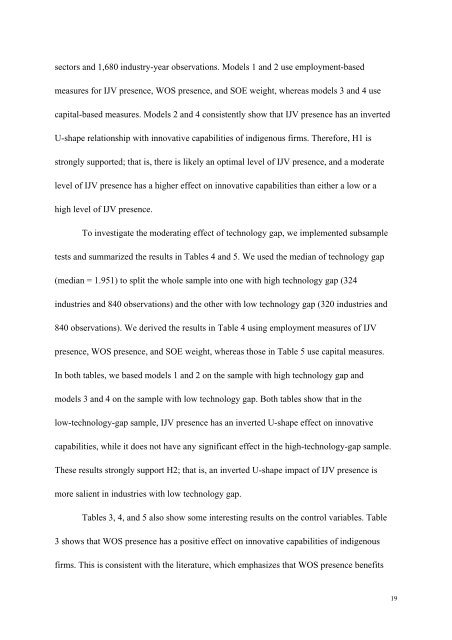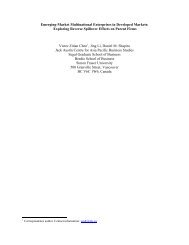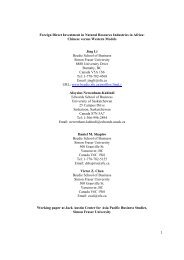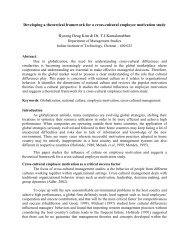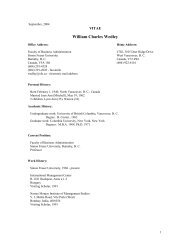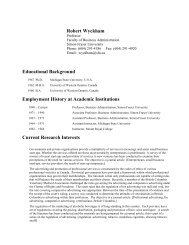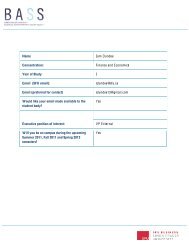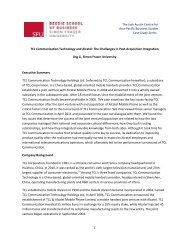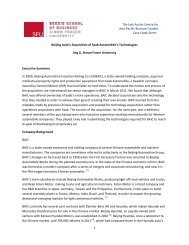Here - Beedie School of Business - Simon Fraser University
Here - Beedie School of Business - Simon Fraser University
Here - Beedie School of Business - Simon Fraser University
Create successful ePaper yourself
Turn your PDF publications into a flip-book with our unique Google optimized e-Paper software.
sectors and 1,680 industry-year observations. Models 1 and 2 use employment-based<br />
measures for IJV presence, WOS presence, and SOE weight, whereas models 3 and 4 use<br />
capital-based measures. Models 2 and 4 consistently show that IJV presence has an inverted<br />
U-shape relationship with innovative capabilities <strong>of</strong> indigenous firms. Therefore, H1 is<br />
strongly supported; that is, there is likely an optimal level <strong>of</strong> IJV presence, and a moderate<br />
level <strong>of</strong> IJV presence has a higher effect on innovative capabilities than either a low or a<br />
high level <strong>of</strong> IJV presence.<br />
To investigate the moderating effect <strong>of</strong> technology gap, we implemented subsample<br />
tests and summarized the results in Tables 4 and 5. We used the median <strong>of</strong> technology gap<br />
(median = 1.951) to split the whole sample into one with high technology gap (324<br />
industries and 840 observations) and the other with low technology gap (320 industries and<br />
840 observations). We derived the results in Table 4 using employment measures <strong>of</strong> IJV<br />
presence, WOS presence, and SOE weight, whereas those in Table 5 use capital measures.<br />
In both tables, we based models 1 and 2 on the sample with high technology gap and<br />
models 3 and 4 on the sample with low technology gap. Both tables show that in the<br />
low-technology-gap sample, IJV presence has an inverted U-shape effect on innovative<br />
capabilities, while it does not have any significant effect in the high-technology-gap sample.<br />
These results strongly support H2; that is, an inverted U-shape impact <strong>of</strong> IJV presence is<br />
more salient in industries with low technology gap.<br />
Tables 3, 4, and 5 also show some interesting results on the control variables. Table<br />
3 shows that WOS presence has a positive effect on innovative capabilities <strong>of</strong> indigenous<br />
firms. This is consistent with the literature, which emphasizes that WOS presence benefits<br />
19


